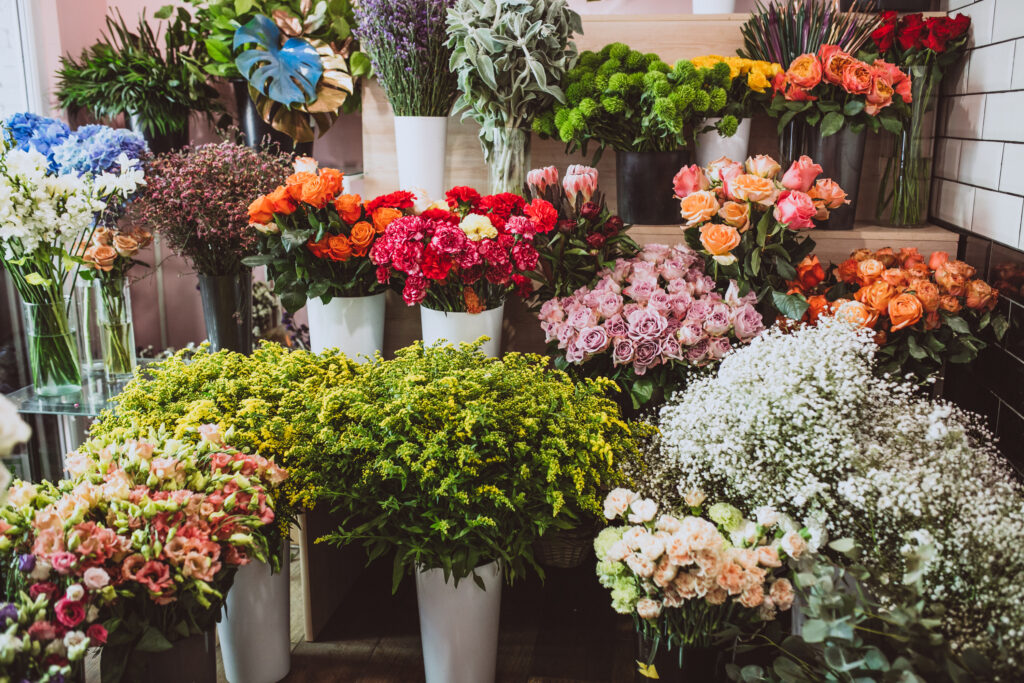Business Planning & Strategy, Financial Models
Flower Store Business: Costs, Revenue Potential & Profitability
Flower stores operate in a sentiment-based, event-driven retail niche with strong seasonality and perishable inventory. Demand peaks around fixed events (Valentine’s Day, Mother’s Day, funerals, weddings), but profitability is unlocked through supply chain efficiency, product bundling, and high-frequency corporate and subscription accounts. While most florists compete on aesthetics and location, scalable profitability requires preordering systems, upsell structures, and waste minimization.
Asset Configuration
CapEx is low-to-moderate, primarily focused on refrigeration, workspace layout, and storefront ambiance. A standard flower shop includes a refrigerated display, design/workbench area, limited seating, and POS. Total area: 500–1,200 sq. ft.
| Asset Category | Cost Range (USD) | Notes |
|---|---|---|
| Refrigerated Floral Display | $10,000 – $20,000 | Critical for extending shelf life and product rotation |
| Workstations & Storage | $5,000 – $10,000 | Tables, sinks, vases, cutters, wrapping supplies |
| POS System & Booking Software | $3,000 – $6,000 | Payment, order tracking, CRM reminders |
| Decor, Signage, Retail Fixtures | $10,000 – $15,000 | Window display, ambient lighting, visual merchandising |
| Delivery Infrastructure | $5,000 – $10,000 | Vehicle lease or outsourced courier integration |
Total CapEx: $33,000 – $61,000, scalable via online-first model with no walk-in traffic. E-commerce-native floral businesses operate at lower CapEx but require higher upfront investment in logistics, marketing and advertising.
Revenue Model
Revenue comes from in-store sales, event orders, online/phone orders, and recurring deliveries. Average bouquet price ranges from $40–$100, with custom wedding/event arrangements running into $500–$2,500+.
Recurring revenue is driven by weekly corporate accounts, subscription deliveries, and sympathy agreements with funeral homes. Upsells include vases, candles, chocolates, and premium packaging.
Annual Revenue Potential for a Urban Retail Flower Store
| Revenue Stream | Volume Assumption | Annual Revenue (USD) |
|---|---|---|
| Retail Walk-In Sales | 6,000 orders/year @ $55 avg. | $330,000 |
| Event & Wedding Orders | 80 events @ $1,500 avg. | $120,000 |
| Corporate/Subscription Accounts | 60 clients @ $200/month | $144,000 |
| Add-Ons (Vases, Cards, Gifts) | $600/week avg. | $31,200 |
| Online Sales & Delivery | 2,000 orders/year @ $65 avg. | $130,000 |
| Total | $755,200 |
Top-performing shops with strong wedding/event books and B2B recurring revenue can exceed $1M/year. Small, walk-in–only florists typically plateau at $150K–$300K.
Operating Costs
COGS is high due to perishability being fresh flowers 35–45% of revenue. Labor includes florists, delivery drivers, and part-time staff during peak periods. Additional costs include rent, utilities, marketing, and packaging.
| Cost Category | Annual Cost (USD) |
|---|---|
| Flower Inventory & Supplies | $265,000 – $340,000 |
| Labor (Designers + Admin) | $150,000 – $185,000 |
| Delivery & Courier Costs | $35,000 – $50,000 |
| Rent & Utilities | $75,000 – $90,000 |
| Marketing & Retargeting | $30,000 – $45,000 |
| Software & Systems | $15,000 – $20,000 |
| Total | $570,000 – $730,000 |
Efficient flower stores with high turnover and strong event business can achieve 20–25% EBITDA margins. Poor inventory planning or low repeat revenue compress margins to <10%.
Profitability Strategies
Core KPIs: revenue per stem sold (RPS) and inventory spoilage rate (ISR). Targets: RPS > $3 and ISR < 15%. Profitability hinges on procurement discipline and pre-order forecasting.
Adopt a pre-order–first model to reduce waste and increase labor efficiency. Use weekly procurement based on projected sales (e.g., Fridays + holidays bulk) and pair with standing orders from corporate clients.
Productize offerings into clear tiers (e.g., Classic $49, Deluxe $79, Signature $129) to enable upselling. Offer premium delivery windows, custom cards, or limited-edition packaging as high-margin add-ons.
Optimize seasonality by front-loading marketing before Valentine’s, Mother’s Day, graduation, etc. Use CRM to automate reminders (e.g., “Your anniversary is next week—ready to re-order?”).
Control labor through part-time scheduling, batch design, and digital POS tracking of time-to-fulfillment. Standardize arrangements for same-day delivery to increase volume during peak hours.
So what?
A flower store is not a retail hobby but rather a logistics-driven, perishability-managed service business. Profitability depends on prebooking volume, waste minimization, and recurring client monetization. Operators who productize inventory, automate retention, and embed upsells can achieve 20–25% EBITDA on <$65K CapEx. In floristry, beauty sells but systems scale.

Are you considering opening your Flower Store business? Download the comprehensive Flower Store Business Financial Model Template from SHEETS.MARKET to simplify your financial planning. This tool will help you forecast costs, revenue, and potential profits, making securing funding and planning for success for your Flower Store business easier.



